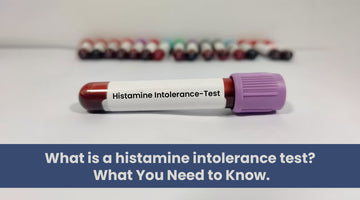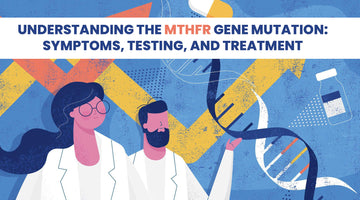Histamine is a remarkable molecule that plays a vital role in our bodies' immune response. It's often associated with allergic reactions, but its functions extend far beyond that. In this blog, we'll learn about the multifaceted role of histamine and how it operates within our body.
The Role of Histamine
Histamine is a chemical compound produced by our immune system to protect us from foreign substances, particularly allergens, that may pose a threat to our body. This molecule is primarily stored in specialized cells called mast cells. Mast cells are scattered throughout various tissues in our body, including our skin, blood vessels, lungs, intestines, and even the brain. When our immune system encounters an allergen, it deploys chemical signals called cytokines to activate mast cells, instructing them to release histamine. This release of histamine triggers a cascade of reactions that are geared towards eliminating the perceived threat. Histamine accomplishes its mission by binding to specific receptors found on various cell types.
Histamine Receptors
Histamine interacts with four primary types of receptors in the body, namely H1, H2, H3, and H4 receptors. The effects of histamine largely depend on which receptor it binds to:
-
H1 Receptors:
-
H2 Receptors:
-
H3 Receptors:
-
H4 Receptors:
Regulating Histamine Levels
Fortunately, our bodies have mechanisms to control histamine levels and prevent them from spiralling out of control. Two essential enzymes, diamine oxidase (DAO) and histamine N-methyltransferase (HNMT), are responsible for breaking down histamine and maintaining its balance.
-
Diamine Oxidase (DAO):
-
Histamine N-Methyltransferase (HNMT):
Maintaining Healthy Histamine Levels
For individuals who experience issues related to histamine regulation due to genetic variations or enzyme dysfunction, there are potential solutions. One such solution is the use of Histamine Control pills, which aim to support healthy histamine balance.
Histamine Control pills work by promoting resonance with the enzymes involved in histamine metabolism, thus enhancing their functions. By supporting a balanced histamine level in the body, these pills can help individuals manage symptoms related to histamine dysregulation, including allergies and other conditions associated with excessive histamine.
Conclusion
In conclusion, histamine is a crucial player in our body's immune response system. While it is essential for protecting us from foreign invaders, an imbalance in histamine levels can lead to chronic inflammation and a variety of health issues. Understanding the roles of DAO and HNMT enzymes in histamine regulation is critical, especially for those with genetic variations or enzyme dysfunction. With the right support, individuals can maintain healthy histamine levels and mitigate the symptoms associated with histamine dysregulation.




